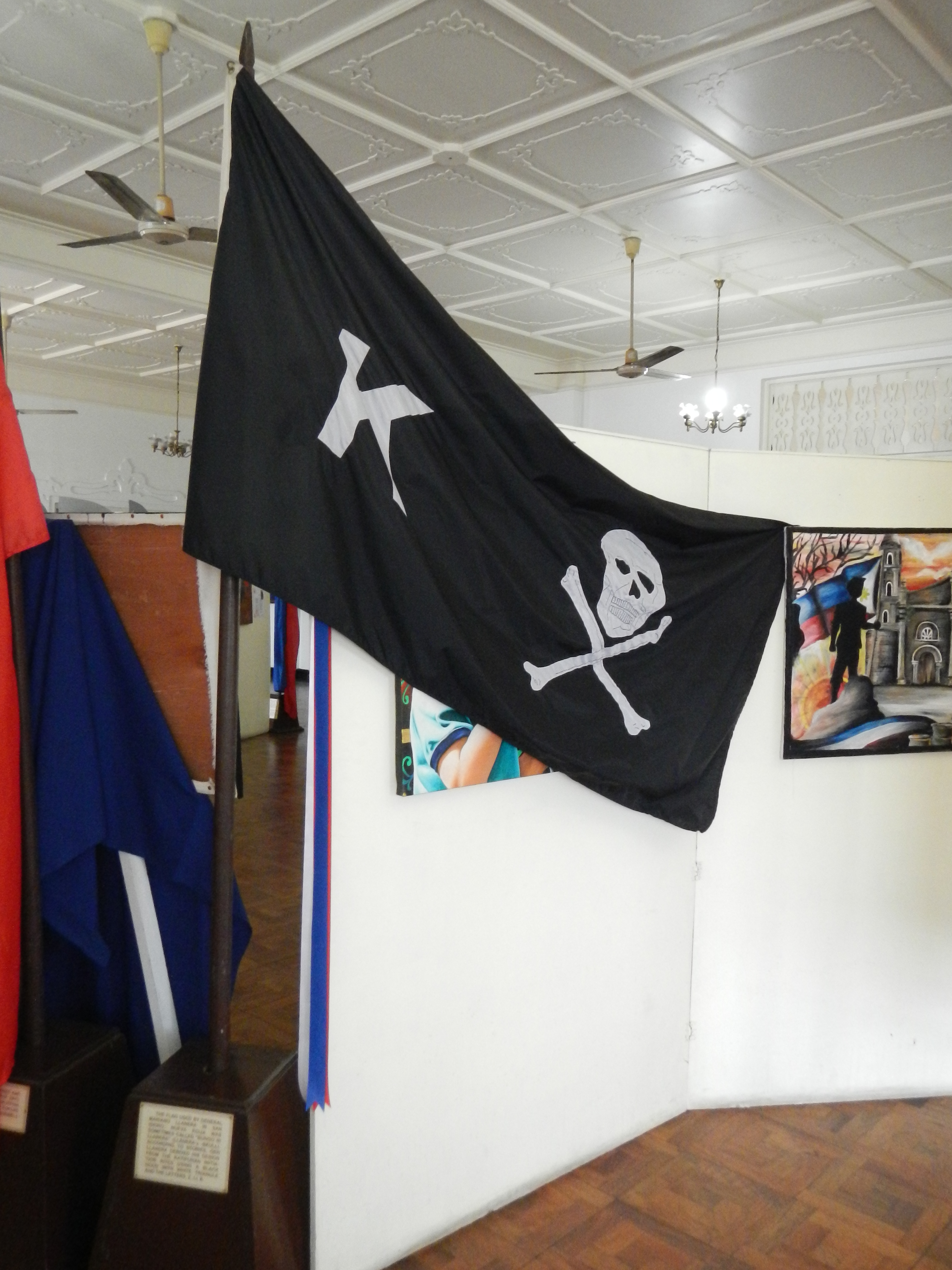Mariano Llanera on:
[Wikipedia]
[Google]
[Amazon]
Mariano Núñez Llanera (born Mariano Llanera y Núñez; November 9, 1855 – September 19, 1942) was a Filipino revolutionary general from


 Llanera gathered with him around 3,000 men, including Tinio and his men, mostly armed with bolos, and bamboo spears. Only few had guns. Of the 3,000 who volunteered, 500 determined men were chosen for the attack. Led by a brass band of Cabiao named ''Banda Makabayan De Cabiao'', the force came in two separate columns from Cabiao and Gapan City and converged in Sitio Pulu, which was 5 kilometers from San Isidro. Despite having only 100 rifles, the rebels furiously held siege the Spaniards in the Casa Tribunal, the arsenal, and other government buildings. Capt. Joaquin Machorro, commander of the Guardias Civiles, was killed on the first day of battle. The Spanish authorities hastily organized a company of 200 armed civilian Spaniards and mercenaries the following day and attacked the overconfident insurgents, driving the latter away from the government center. The next day, more Spanish reinforcements arrived. It forced the poorly armed rebels to retreat, leaving behind 60 dead. The Spaniards went in hot pursuit of the insurgents, forcing those from Cabiao to flee to
Llanera gathered with him around 3,000 men, including Tinio and his men, mostly armed with bolos, and bamboo spears. Only few had guns. Of the 3,000 who volunteered, 500 determined men were chosen for the attack. Led by a brass band of Cabiao named ''Banda Makabayan De Cabiao'', the force came in two separate columns from Cabiao and Gapan City and converged in Sitio Pulu, which was 5 kilometers from San Isidro. Despite having only 100 rifles, the rebels furiously held siege the Spaniards in the Casa Tribunal, the arsenal, and other government buildings. Capt. Joaquin Machorro, commander of the Guardias Civiles, was killed on the first day of battle. The Spanish authorities hastily organized a company of 200 armed civilian Spaniards and mercenaries the following day and attacked the overconfident insurgents, driving the latter away from the government center. The next day, more Spanish reinforcements arrived. It forced the poorly armed rebels to retreat, leaving behind 60 dead. The Spaniards went in hot pursuit of the insurgents, forcing those from Cabiao to flee to 
Cabiao, Nueva Ecija
Cabiao, officially the Municipality of Cabiao ( Tagalog: ''Bayan ng Cabiao''), is a 1st class municipality in the province of Nueva Ecija, Philippines. According to the 2020 census, it has a population of 85,862 people. Cabiao is the 3rd most pop ...
who fought in his aforementioned home province, and also in the neighboring provinces of Bulacan
Bulacan, officially the Province of Bulacan ( tl, Lalawigan ng Bulacan), is a province in the Philippines located in the Central Luzon region. Its capital is the city of Malolos. Bulacan was established on August 15, 1578, and part of the Me ...
, Tarlac
Tarlac, officially the Province of Tarlac ( pam, Lalawigan ning Tarlac; pag, Luyag/Probinsia na Tarlac; ilo, Probinsia ti Tarlac; tgl, Lalawigan ng Tarlac; ), is a landlocked province in the Philippines located in the Central Luzon region. It ...
, and Pampanga
Pampanga, officially the Province of Pampanga ( pam, Lalawigan ning Pampanga; tl, Lalawigan ng Pampanga ), is a province in the Central Luzon region of the Philippines. Lying on the northern shore of Manila Bay, Pampanga is bordered by Tarlac ...
. He is considered one of the "three Fathers" (the main instigators/ commanders) of the Cry of Nueva Ecija
The first Cry of Nueva Ecija ( Filipino: ''Sigaw ng Nueva Ecija''; Spanish: ''Grito de Nueva Écija'') occurred on September 2–5, 1896, in the province of Nueva Ecija, in the Philippines under Spanish rule. It followed shortly after the Cry ...
, along with Pantaleon Valmonte
Pantaleon, also known as Panteleimon, (Greek: ) was a Greek king who reigned some time between 190–180 BC in Bactria and India. He was a younger contemporary or successor of the Greco-Bactrian king Demetrius, and is sometimes believed to hav ...
and Manuel Tinio.
Early life
Llanera studied at theColegio de San Juan de Letran
The Colegio de San Juan de Letran, (transl: College of San Juan de Letran) also referred to by its acronym CSJL, is a private Catholic coeducational basic and higher education institution owned and run by the friars of the Order of Preachers i ...
. He then became a ''Cabeza de barangay'' and later, a ''Gobernadorcillo'' for two terms in the town of Cabiao. He married his first wife, Salome Siapoco, in 1877.
Philippine Revolution
As soon as the news about the Revolution reachedNueva Ecija
Nueva Ecija, officially the Province of Nueva Ecija ( tgl, Lalawigan ng Nueva Ecija , also ; ilo, Probinsia ti Nueva Ecija; pag, Luyag/Probinsia na Nueva Ecija; Kapampangan: ''Lalawigan/Probinsia ning Nueva Ecija''), is a landlocked province ...
and Bulacan
Bulacan, officially the Province of Bulacan ( tl, Lalawigan ng Bulacan), is a province in the Philippines located in the Central Luzon region. Its capital is the city of Malolos. Bulacan was established on August 15, 1578, and part of the Me ...
, men were mobilized on September 1, 1896. Among the leaders were Mariano and his son Eduardo Llanera, Mamerto Natividad, Alipio Tecson and Manuel Tinio. Llanera used his own flag: a black flag, with the single white letter K and the skull and crossbones symbol. It was said that Andrés Bonifacio himself ridiculed the flag and called it ''Llanera's Skull''.

Pampanga
Pampanga, officially the Province of Pampanga ( pam, Lalawigan ning Pampanga; tl, Lalawigan ng Pampanga ), is a province in the Central Luzon region of the Philippines. Lying on the northern shore of Manila Bay, Pampanga is bordered by Tarlac ...
, and those from Gapan to hide in San Miguel de Mayumo in Bulacan
Bulacan, officially the Province of Bulacan ( tl, Lalawigan ng Bulacan), is a province in the Philippines located in the Central Luzon region. Its capital is the city of Malolos. Bulacan was established on August 15, 1578, and part of the Me ...
- San Miguel, Bulacan. The insurgents from San Isidro fled across the river to hide in Jaen, Nueva Ecija
Jaen, officially the Municipality of Jaen ( tl, Bayan ng Jaen), is a 2nd class municipality in the province of Nueva Ecija, Philippines. According to the 2020 census, it has a population of 79,189 people.
History
During the Spanish Era, the muni ...
. The relatives of those who were recognized were driven away from their homes by the colonial authorities. The Spaniards’ relentless pursuit of the rebels forced them to disband and go into hiding until January 1897. After Bonifacio's death in May 1897, he was designated lieutenant general. He was with Emilio Aguinaldo when the latter, along with 35 more revolutionaries, was exiled to Hong Kong on December 23, 1897 in accordance to the Pact of Biak-na-Bato
The Pact of Biak-na-Bato, signed on December 15, 1897, created a truce between Spanish colonial Governor-General Fernando Primo de Rivera and the revolutionary leader Emilio Aguinaldo to end the Philippine Revolution. Aguinaldo and his fellow rev ...
.

Philippine–American War
When the Philippine–American War broke out, he was in thePhilippines
The Philippines (; fil, Pilipinas, links=no), officially the Republic of the Philippines ( fil, Republika ng Pilipinas, links=no),
* bik, Republika kan Filipinas
* ceb, Republika sa Pilipinas
* cbk, República de Filipinas
* hil, Republ ...
and was assigned by Gen. Antonio Luna
Antonio Narciso Luna de San Pedro y Novicio Ancheta (; October 29, 1866 – June 5, 1899) was a Filipino army general who fought in the Philippine–American War before his assassination in 1899.
Regarded as one of the fiercest generals of hi ...
as lieutenant general in Manila
Manila ( , ; fil, Maynila, ), officially the City of Manila ( fil, Lungsod ng Maynila, ), is the capital of the Philippines, and its second-most populous city. It is highly urbanized and, as of 2019, was the world's most densely populate ...
. On February 23, 1899, Llanera and his troops was with Luna's forces when the latter staged a counterattack in Caloocan to prevent the Americans from invading further north. The counterattack, however, was only partly successful because the Kawit battalion refused to move. Llanera was later caught by the Americans during the same year. He was deported to Guam
Guam (; ch, Guåhan ) is an organized, unincorporated territory of the United States in the Micronesia subregion of the western Pacific Ocean. It is the westernmost point and territory of the United States (reckoned from the geographic cent ...
on January 16, 1901 with Artemio Ricarte
Artemio Ricarte y García (October 20, 1866 – July 31, 1945) was a Filipino general during the Philippine Revolution and the Philippine–American War. He is regarded as the ''Father of the Philippine Army'', and the first Chief of Staff ...
and 30 more military officers of the Revolution. He returned to the Philippines
The Philippines (; fil, Pilipinas, links=no), officially the Republic of the Philippines ( fil, Republika ng Pilipinas, links=no),
* bik, Republika kan Filipinas
* ceb, Republika sa Pilipinas
* cbk, República de Filipinas
* hil, Republ ...
in February 1903 in response to the demand of the people of the United States
The United States of America (U.S.A. or USA), commonly known as the United States (U.S. or US) or America, is a country primarily located in North America. It consists of 50 states, a federal district, five major unincorporated territori ...
.
Death and legacy
In 1919, he married his second wife, Feliza Balajadia. He died in his hometown (Cabiao) on September 19, 1942. The General Llanera Memorial Lodge No. 168, established in 1963 at Gapan City, was named in honor of him. The General Mariano Llanera Day, a commemoration of Llanera's attack against the Spaniards on September 2, 1896, was celebrated inNueva Ecija
Nueva Ecija, officially the Province of Nueva Ecija ( tgl, Lalawigan ng Nueva Ecija , also ; ilo, Probinsia ti Nueva Ecija; pag, Luyag/Probinsia na Nueva Ecija; Kapampangan: ''Lalawigan/Probinsia ning Nueva Ecija''), is a landlocked province ...
- Cry of Nueva Ecija.
References
{{DEFAULTSORT:Llanera, Mariano 1860 births 1922 deaths Filipino generals People of the Philippine–American War People of the Philippine Revolution Tagalog people People from Nueva Ecija Colegio de San Juan de Letran alumni